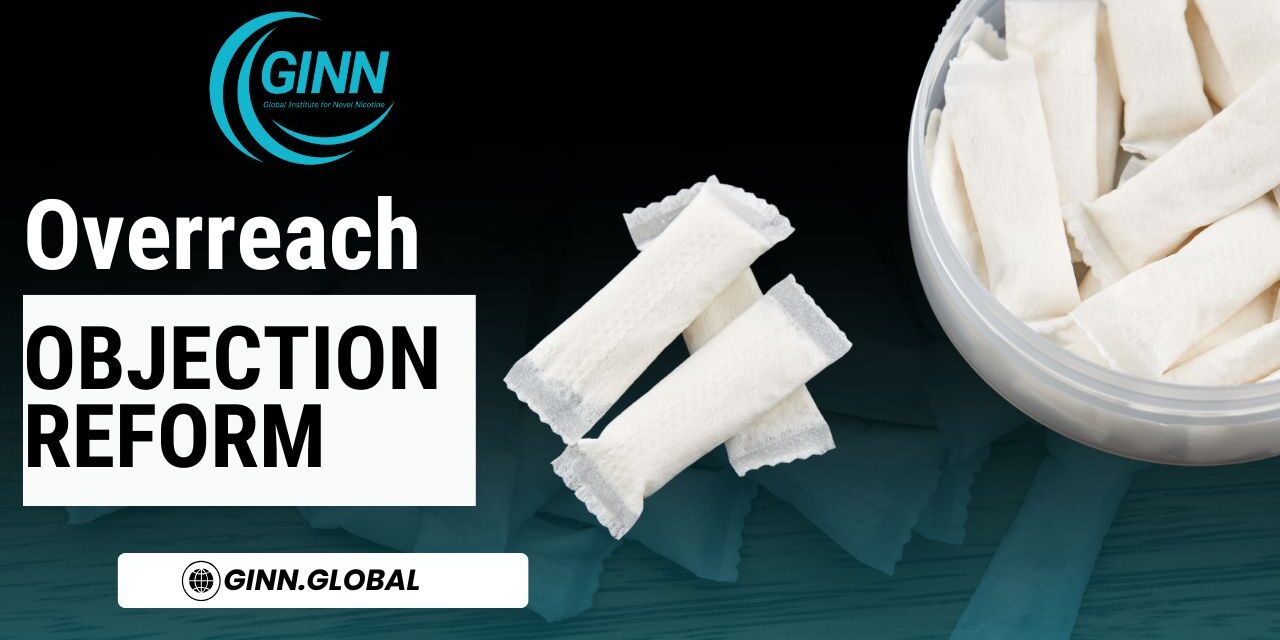The European Commission and several EU Member States have formally reviewed the draft Royal Decree submitted by Spain which proposes modifications to Spain’s national legislation governing the manufacturing, presentation, and marketing of tobacco products and related products. This draft decree was formally notified to the Commission on January 24, 2025, utilizing the procedure established by Directive (UE) 2015/1535. Following this notification, the Commission and several Member States, specifically Romania, Czechia, Croatia, Greece, Italy, and Sweden, have submitted detailed opinions or observations concerning the draft. The submission of these detailed opinions has resulted in the extension of the “status quo” period for the Spanish draft until July 28, 2025. The core objective of the notified draft is to update national law regarding aspects such as content, quality, safety, labelling, and external packaging requirements for tobacco and related products.
The observations and detailed opinions submitted raise various points of concern, often cantered on potential conflicts with EU law, particularly Directive 2014/40/EU (the Tobacco Products Directive – TPD) and the principle of free movement of goods within the EU internal market.
Observations from the European Commission:
- Definitions: The Commission noted several potential inconsistencies or ambiguities in the definitions introduced by the Spanish draft when compared to EU Directive 2014/40/EU:
- “Disposable electronic cigarette”: The draft’s definition is considered broader than the scope of Directive 2014/40/EU. The Commission asks Spain to ensure this broader definition does not create confusion regarding the application of the relevant requirements of Directive 2014/40/EU to disposable e-cigarettes, which are covered by the Directive’s Article 2(16).
- “Related product”: The draft’s definition is significantly wider than what is typically understood by this term under Directive 2014/40/EU. While the Directive covers electronic cigarettes and refill containers (specifically those containing nicotine), and herbal smoking products, the Spanish draft includes products like non-nicotine e-cigarettes, non-nicotine refill containers, nicotine pouches, and other nicotine products. The Commission requests clarity to avoid confusion regarding the scope and requirements of Directive 2014/40/EU.
- “Ingredients hazardous to human health”: The draft defines these as substances classified as hazardous under Regulation (EC) No 1272/2008. While Directive 2014/40/EU requires the use of only non-hazardous ingredients (excluding nicotine) in e-liquids, it does not define “hazardous” and allows Member States discretion. However, the Commission warns that Spain must not limit this category solely to substances defined by the specific Regulation mentioned but must prohibit all ingredients (except nicotine) that are hazardous to human health. Spain is invited to ensure the correct application of Article 20(3)(e) of the TPD.
- “Nicotine”: The draft defines nicotine as “nicotinic alkaloids and any derivative of nicotine”. The Commission points out that this deviates from the TPD’s definition (“nicotinic alkaloids”). The TPD’s definition already includes synthetic alkaloids and nicotine derivatives. The proposed deviation risks creating a false impression that nicotine derivatives are not covered by the EU definition. Spain is advised to align its definition with the TPD’s Article 2(19).
2. Use of EU-CEG Portal: The draft requires manufacturers/importers to submit information for non-nicotine e-cigarettes and refill containers via the EU-CEG portal, in addition to the nicotine-containing products covered by EU implementing decisions. The Commission clarifies that non-nicotine e-cigarettes, non-nicotine refill containers, heated herbal products, and nicotine pouches are not within the scope of the relevant EU implementing decisions (2015/2186 and 2015/2183), which govern reporting formats for tobacco products and nicotine-containing e-cigarettes/refill containers. If Spain intends to use EU-CEG for these non-scoped products, it must ensure this does not interfere with data submission for EU-regulated products, that the Commission is not liable for this data, and that the data is visible to the Commission. The Commission requests an explanation on how this requirement will be practically applied.
3. Labelling of e-cigarettes: The draft mandates a specific health warning for non-nicotine e-cigarettes: “Consuming this product is harmful to your health”. The Commission notes that devices designed for vapor consumption without nicotine can also be used with nicotine-containing vapor. As such, these devices fall under EU requirements for health warnings on nicotine products established in Directive 2014/40/EU. The Commission invites Spain to ensure that its definition of “non-nicotine e-cigarette” does not interfere with the labelling obligations for nicotine e-cigarettes under the TPD, specifically the requirement for health warnings regarding nicotine content on unit and external packaging.
Detailed Opinions from Member States:
The detailed opinions from Romania, Czechia, Croatia, Greece, Italy, and Sweden express significant concerns, primarily arguing that the Spanish draft introduces measures that are more restrictive than permitted by EU law and constitute disproportionate obstacles to the free movement of goods (Article 34 TFEU) within the internal market. These concerns often relate to products not fully harmonized by the TPD but impacted by the Spanish draft.
- Limit on Nicotine Pouches: Romania, Czechia, Greece, Italy, and Sweden strongly object to the proposed maximum nicotine content limit of 99 mg per pouch.
- They unanimously consider this limit a de facto prohibition. They argue that typical nicotine pouch products legally marketed in other EU countries contain significantly higher levels (e.g., 12-20 mg/pouch, with the German Federal Institute suggesting 16.6 mg/pouch).
- This measure is viewed as a violation of the principle of free movement of goods (Article 34 TFEU), as it would effectively ban products legally sold in other Member States.
- Member States argue that Spain has not provided sufficient justification or clear evidence of a significant public health risk to warrant such a restrictive measure, as required by Article 36 TFEU. They suggest that less restrictive alternatives, such as prohibiting sales to minors or implementing adequate warning labels, were not evaluated and would be more proportionate to the stated objective. Sweden notes that non-combustion products like nicotine pouches pose a lower health risk than cigarettes.
- Flavour Ban: Romania and Italy specifically object to the proposed ban on flavours other than tobacco across several product categories, including e-cigarettes (with and without nicotine), nicotine pouches, and heated herbal products.
- They argue this blanket ban is disproportionate and exceeds the scope of the TPD, which does not prohibit flavouring in non-tobacco products like e-cigarettes. The TPD grants Member States discretion on flavours for e-cigarettes but not in a way that goes beyond its limits.
- This ban is deemed incompatible with free movement principles and potentially counterproductive, as it might encourage users to switch to more harmful combustible tobacco products.
3. Labelling and Presentation Rules: Romania and Italy contend that the draft imposes labelling and presentation requirements that go beyond the TPD and apply to product categories not fully harmonized by EU law.
- Examples include requiring a warning like “Smoking this product is harmful to health” on non-nicotine e-cigarettes, which is not a warning foreseen by the TPD.
- Restrictions on colours and design elements perceived as “attracting attention” are criticized as ambiguous, lacking legal certainty, disproportionate, and potentially hindering trade and brand recognition. There is also a concern that banning distinctive elements could inadvertently foster illicit trade. Italy notes that TPD Article 20(4) allows for information on nicotine content and does not prohibit other elements or images relating to product features or flavours.
4. Notification Requirements for Non-Harmonized Products: Italy points out that extending the EU-CEG notification obligation to non-nicotine e-cigarettes, nicotine pouches, and heated herbal products is problematic. Since these products are not covered by the TPD, there are technical and legal difficulties in registering them correctly within the existing EU-CEG system. The TPD’s notification requirement only applies to nicotine-containing e-cigarettes and refill containers.
5. Transition Period: Romania and Italy consider the proposed transition periods to be insufficient or non-existent for certain products (zero period for nicotine pouches and heated herbal products; only 10 months for e-cigarettes/refill containers, with a mandatory withdrawal after 12 months). They argue that adapting to these changes (product reformulation, production line modification, labelling updates) requires substantial time. Citing EU case law (C-309/02, Radlberger), they assert that the absence of an adequate transition period constitutes a restriction on the free movement of goods.
6. Heated Herbal Products: Italy notes that the regulatory framework proposed for heated herbal products contains measures that appear disproportionate. Italy already has its own national framework for these products, and the Spanish measures could potentially hinder the export of Italian products legally manufactured under that framework. This is seen as inconsistent with the principle of proportionality and Articles 34 and 36 TFEU. Italy emphasizes that restrictive measures must be justified by evidence, proportional to the objective, and less restrictive alternatives must be considered.
In conclusion, the detailed opinions from the Member States, supported by observations from the European Commission, highlight significant concerns that the Spanish draft Royal Decree introduces regulatory measures that are more stringent than required by or inconsistent with existing EU law. These measures extend to product categories not fully harmonized at the EU level and are seen as creating disproportionate obstacles to the free movement of goods within the internal market. Member States argue that these measures lack sufficient justification, fail to consider less restrictive alternatives, and are not proportional to the stated public health objectives, potentially infringing upon core EU principles and Treaty articles. Romania also specifically cites potential violations of Articles 16 and 17 of the Charter of Fundamental Rights (freedom of business, property rights) and the WTO TRIPS Agreement.







